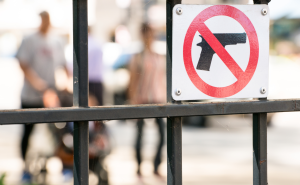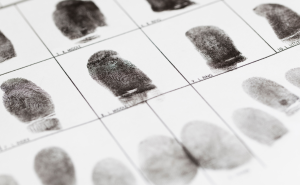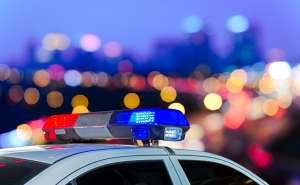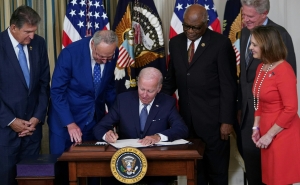Reflecting on the Path Forward After Historic Movement on Both Sides of Gun Violence Prevention
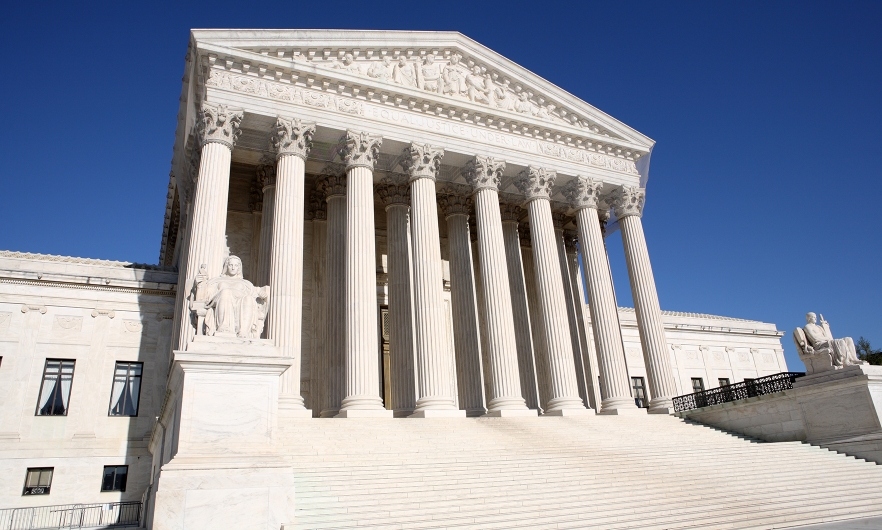
Over the last several months, the country has endured the familiar and uniquely American heartbreak of multiple mass shootings. Then in June, an ideological Supreme Court decision struck down New York’s concealed carry laws which allowed for reasonable limits on guns in public. We also saw reason for hope though, after the first meaningful, bipartisan gun safety legislation in decades was signed into law. The sharp juxtaposition of these events leaves Americans searching for answers about what comes next – both for those working to keep our communities safe from deadly firearms and those whose lives have been shattered by gun violence.
Gun violence continues to plague the country
While mass shootings capture headlines, they represent just a small fraction of the daily toll of gun violence in our country.
Against a backdrop of record gun sales, the latest data from the Centers for Disease Control and Prevention shows 2020 had the highest number of gun deaths ever recorded – 45,222; more than 120 deaths per day – including a 35 percent increase in gun-related homicides. The data reveal that the burden of gun violence falls disproportionately on Black and brown Americans, with young Black males representing two percent of the total U.S. population but accounting for approximately 38 percent of all gun homicide deaths.
Our analysis of the data reveals that states with robust gun laws have lower gun-related death rates. These include State and local policymakers have the power to curb various forms of gun violence, including homicides and suicides.
The Supreme Court weakens gun laws
In June, the Supreme Court chose to ignore gun violence as a public health crisis in their decision on New York State Rifle & Pistol Association v. Bruen. This decision struck down an important part of New York’s concealed carry law that required permit applicants to demonstrate a particular need to carry a firearm for self-defense. Public health research suggests the decision will lead to more guns in more public spaces and more carnage in our communities. In fact, the decision has already changed the conceal carry permitting process for other states, including Maryland and Massachusetts. It has the potential to change laws in California, New Jersey, and Hawaii as well.
Responding to the decision, Alex McCourt, director of legal research, laid out the consequences quite plainly, saying, “Our research demonstrates that making it easier to carry guns in public will result in more gun deaths in New York and across the country in states where similar laws will be challenged.”
While expanding the number of people who can legally carry a gun in public, the court also changed the way future gun cases must be evaluated by lower courts. Now, courts must rely on arbitrarily defined historical precedent, not considerations of public safety. Kelly Roskam, director of law and policy, said, “This means courts evaluating future challenges to gun safety laws will increasingly rely on incomplete, false, or extremely subjective readings of history rather than empirical evidence about the real-world impact of expanding access to guns and leading to more gun deaths.”
A brighter side: Federal gun violence prevention
In spite of this setback, in June Congress passed the most significant federal gun violence prevention law in nearly 30 years. While more needs to be done to address the firearm epidemic in the U.S., the new legislation does address several key areas that research shows can lead to meaningful reductions in gun violence.
The law begins to close the intimate partner loophole by including dating partners in firearm restrictions for anyone convicted of domestic violence misdemeanors. Women are five times more likely to be murdered by an abusive partner when their abuser has access to a gun. Our research shows that domestic abusers often escalate or may be involved in other crimes.
The bill also provides $750 million to states and localities to implement Extreme Risk Protective Orders (ERPOs). Currently 19 states and the District of Columbia have laws that authorize ERPOs. These laws allow people such as family members or law enforcement officers to petition a court to temporarily remove guns from individuals who are deemed a serious threat to themselves or others. The laws also prohibit an individual from purchasing firearms for the duration of an order. Some states also allow other petitioners such as health professionals. If these laws are fully implemented, including better training for law enforcement and prosecutors, they could help address the burden of suicide, the leading cause of gun deaths in the United States.
Nevertheless, the new federal legislation is far from perfect. We have concerns about funding for school safety that focuses on additional law enforcement presence. The law does not call for equitable approaches to school safety, and students of color are likely to be adversely affected. This could fuel the school-to-prison pipeline. To address these concerns, the Center will continue to work with gun violence prevention funders and organizations across the country on ensuring equitable creation and implementation of firearm laws through its Racial Equity Impact Assessment tool. And of course, the law does not include some of the evidence-based policies that we know reduce gun violence such as firearm purchaser licensing.
Continuing the upward momentum, the federal law’s new definitions for firearm dealers, combined with a new permanent director of the Bureau of Alcohol, Tobacco, Firearms and Explosives (ATF), have a lot of potential to impact illegal gun trafficking. Recently, Steve Dettelbach — a former federal prosecutor for the Justice Department’s civil rights division — became only the second Senate-confirmed permanent director of the ATF in the bureau’s history. Under Dettelbach, the ATF can better address gun trafficking, ensuring licensed gun dealers comply with the federal law, and more.
The path forward
The landscape for gun violence prevention researchers and advocates was significantly altered in the span of four days in June. Which begs the question: where do we go from here?
For one, gun violence prevention advocates need to renew our focus on evidence-based policies that we know reduce gun deaths. We are still understanding how the Supreme Court decision will affect many of the core policies we advocate, including purchaser licensing reforms, ERPOs, promoting safe and secure firearm storage, community violence intervention, and others.
We are also focusing on implementation of the new bipartisan federal law. ERPO laws are proven to be effective, but only if people who have access to the laws know they’re available and know how to use them. Shootings in Buffalo and Highland Park demonstrate that when opportunities to use ERPOs are missed, the consequences can be devastating. Even those opposed to regulation see their value. And public opinion data shows broad support for ERPO laws. As part of its Safer States network, the Center is working with partners at the state level to provide guidance and support to ensure ERPO laws are effectively implemented across the country. The network also allows us to collaborate with local organizations on other evidence-based solutions.
We will also continue to investigate short- and long-term effects of the Supreme Court’s decision on concealed carry laws. Upcoming research will continue to study on the impact of loosening concealed carry laws on different types of gun violence in states across the U.S.. And we’ve developed a virtual reality to test the appropriateness and accuracy of civilian gun use.
But our work will continue and, thanks to this new federal law, we will have more tools at our disposal in the fight to make gun violence a rarity.

